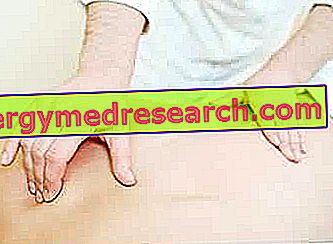
Scientific name
Oenothera biennis
Family
Onagraceae
Origin
Europe
Used Parts
The drug of phytotherapeutic importance is made up of oil extracted from evening primrose seeds
Chemical constituents
- Linoleic acid;
- Gammalinolenic acid;
- Oleic acid;
- Palmitic acid;
- Stearic acid
Evening Primrose in Herbalist: Property of the Enotera
The polyunsaturated fatty acids present in evening primrose oil are indicated in the treatment and prevention of numerous pathologies on an inflammatory basis (premenstrual syndrome, atopic dermatitis, rheumatoid arthritis, breast pain associated with the menstrual cycle, menopausal symptoms, diabetes and coronary heart disease) .
Biological activity
The oil obtained from evening primrose seeds is a rich source of polyunsaturated fatty acids.
In particular, among these stand out above all the gamma-linolenic acid (or GLA) and the linolenic acid, which can be converted by our organism into GLA thanks to the action of the delta-6-desaturase enzyme.
Gamma-linolenic acid plays an essential role in our body. In fact, this acid - once in the body - is converted into diomo-gamma-linolenic acid which, in turn, is converted into prostaglandin E1 (or PGE1) and thromboxane A1 (TXA1).
PGE1 is a prostaglandin with an anti-inflammatory action and also has a protective action against cell membranes.
TXA1 also has anti-inflammatory properties, as well as being able to exert a vasodilating action.
In addition, the evening primrose oil, again thanks to its rich content in polyunsaturated fatty acids, has been shown to possess marked antioxidant activity.
However, the use of this plant has not obtained official approval for any kind of therapeutic indication.
However, the use of evening primrose oil has been officially approved in the cosmetic field (for more information, read: "Evening Primrose Oil in Cosmetics").
Evening primrose in folk medicine and homeopathy
The properties of evening primrose oil have long been known to folk medicine, which uses it precisely as an anti-inflammatory remedy (especially in the case of skin diseases) and as a remedy for premenstrual syndrome.
Other non-approved uses of the aforementioned oil include its use in cases of hypercholesterolemia, hot flashes associated with menopause, mastalgia, hypertension, rheumatoid arthritis, autoimmune diseases and hyperactivity in children.
The evening wine is also exploited by homeopathic medicine, where it can be found in the form of granules, oral drops and mother tincture.
In this context the plant is used in case of diarrhea in children, arthritis, rheumatism and asthma.
The amount of homeopathic remedy to be taken can vary from one individual to another, also depending on the type of disorder that needs to be treated and according to the type of preparation and homeopathic dilution that is intended to be used.
Side effects
Following the use of evening primrose oil, side effects may occur such as nausea, vomiting, diarrhea, flatulence and abdominal bloating.
Furthermore, following the use of the aforementioned oil, cases of lowering of the convulsive threshold have been reported in patients suffering from pre-existing seizure disorders and in patients on therapy with drugs capable of lowering the convulsive threshold. Therefore, in these cases it is necessary to use extreme caution and seek the advice of the doctor.
Contraindications
The use of the evening wine and its oil is contraindicated in case of hypersensitivity to one or more components and in patients with epilepsy.
Pharmacological Interactions
- Phenotiazine: a case of temporal epilepsy was described in a schizophrenic subject who was taking the drug in association with evening primrose oil.
- Anticonvulsants, since the oil of the plant could reduce its therapeutic efficacy.
- Anticoagulants, low molecular weight heparins, platelet aggregation inhibitors, thrombolytic agents, since the concomitant use of these drugs and evening primrose oil may increase the risk of bleeding.



